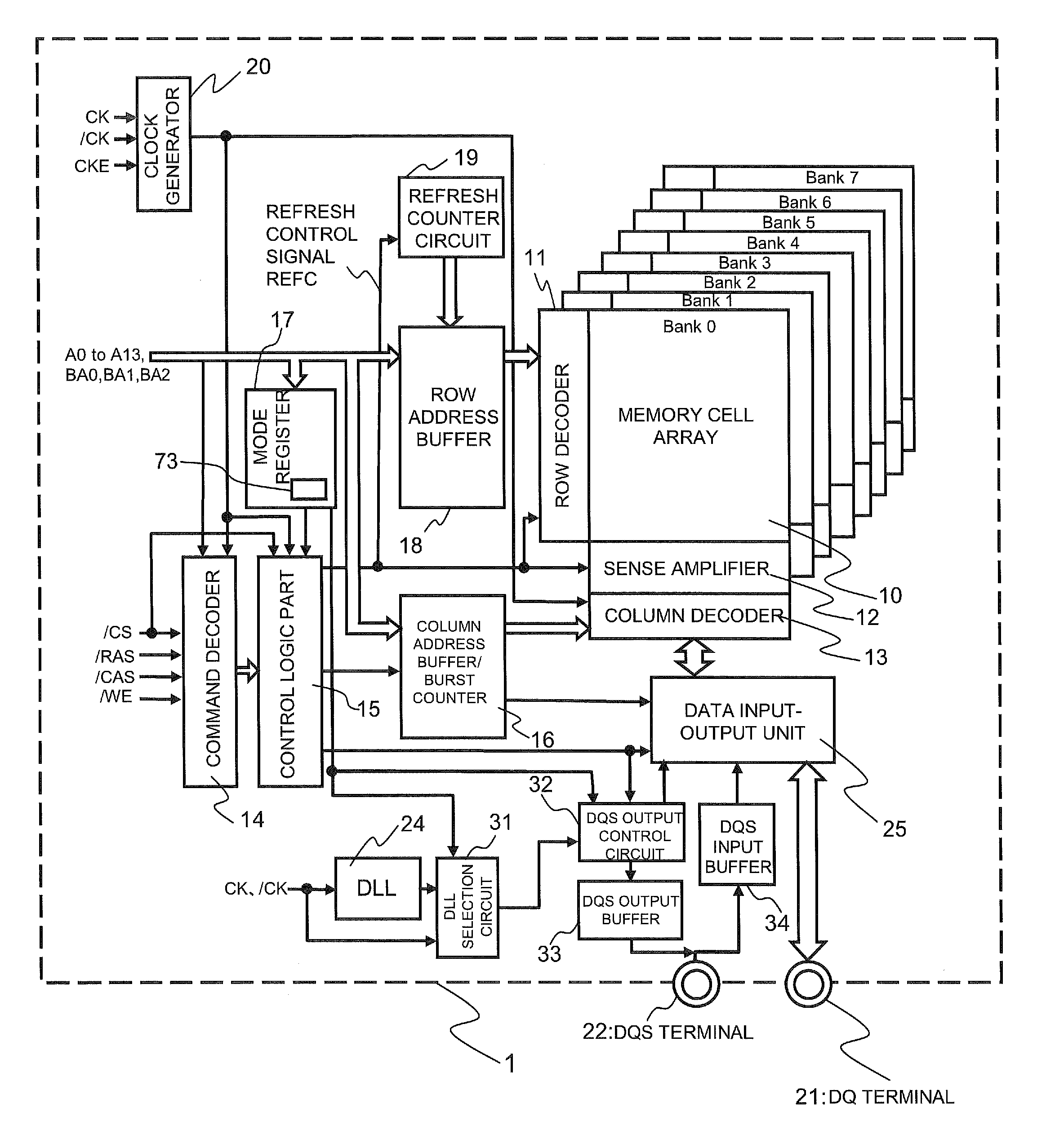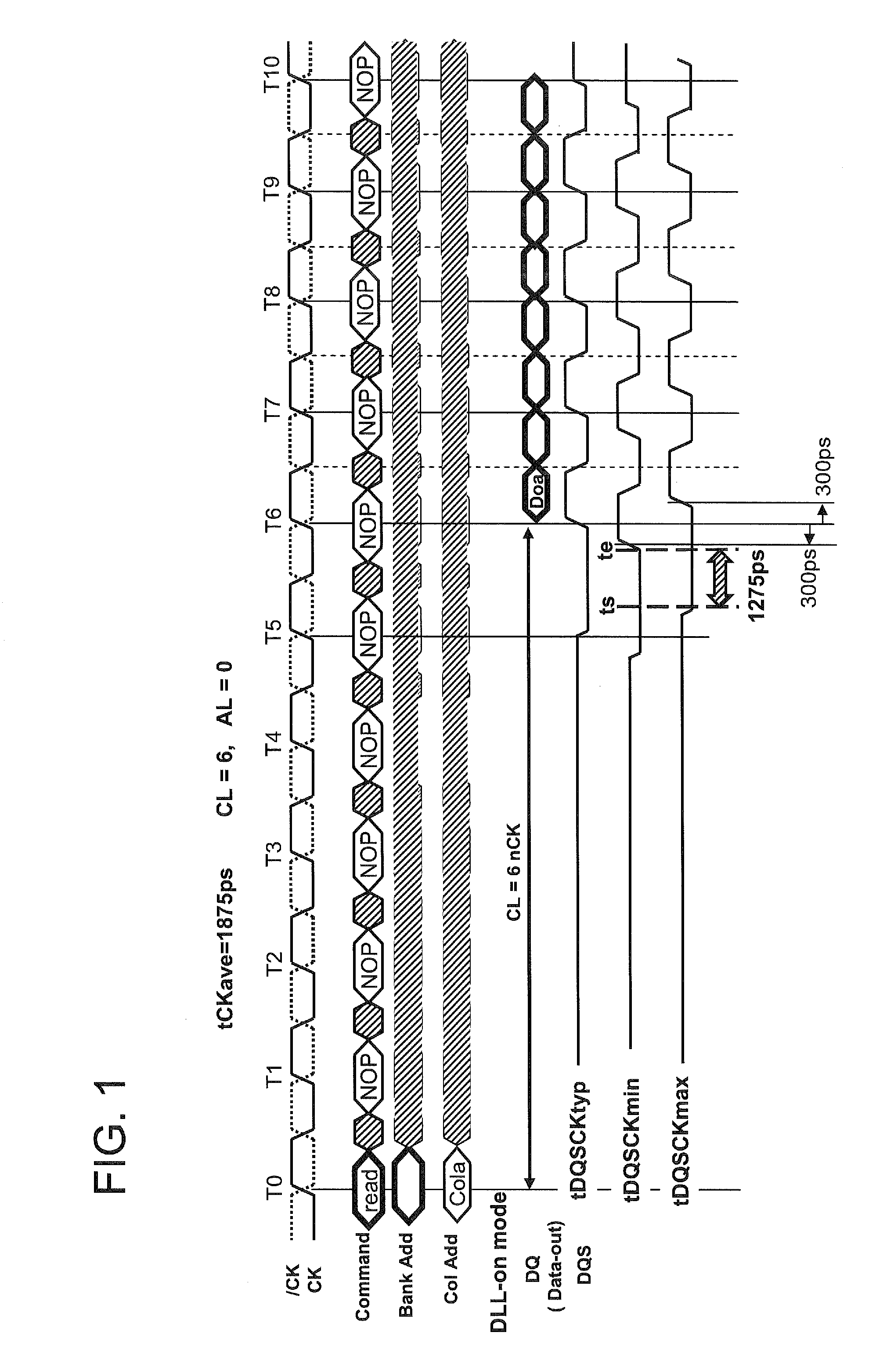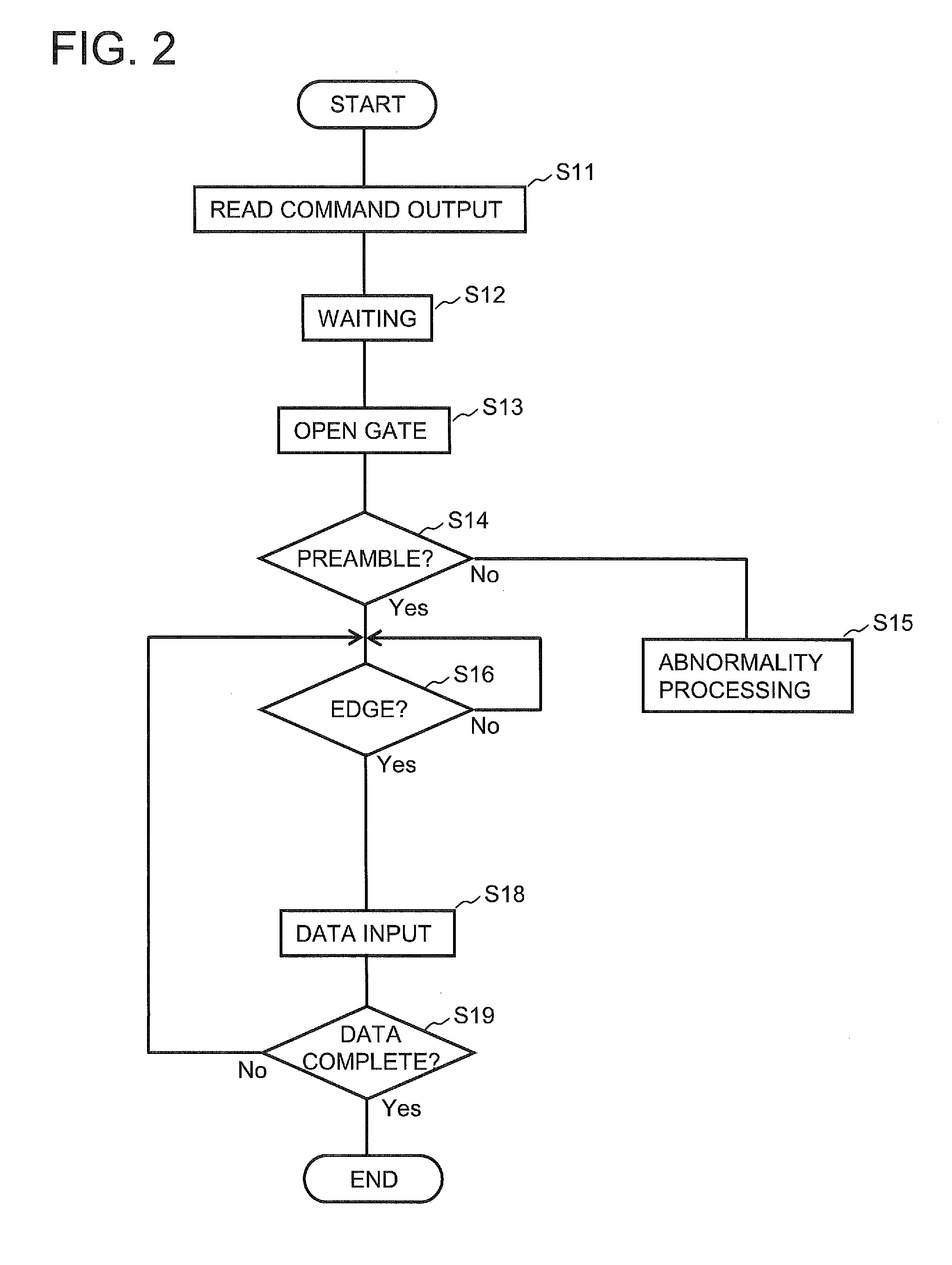Semiconductor memory device, method of controlling read preamble signal thereof, and data transmission system
a memory device and read preamble technology, applied in the direction of information storage, static storage, digital storage, etc., can solve the problems of internal clock phase delay with regard to ck signal, difficult to detect read preamble signal with suitable timing to receive head data, and dll off mode is hardly used
- Summary
- Abstract
- Description
- Claims
- Application Information
AI Technical Summary
Benefits of technology
Problems solved by technology
Method used
Image
Examples
example 1
[0045]FIG. 5 is a configuration diagram of an overall memory system according to an example of the present invention. FIG. 5 is a 64-bit parallel read-write memory system. A semiconductor memory device 1 is an 8-bit parallel read-write device, and 8 semiconductor memory devices 1 are connected in parallel to perform 64-bit parallel reading and writing. Furthermore, in the memory system of FIG. 5 a configuration is assumed in which 2 ranks of the semiconductor memory devices 1 are mounted on each of two DIMMs (Dual Inline Memory Module). That is, the configuration is of a total of 4 ranks of semiconductor memory devices, DIMM1 Rank-1, DIMM1 Rank-2, DIMM2 Rank-1, DIMM2 Rank-2, and each rank further includes 8 semiconductor memory devices 1. The total number of semiconductor memory devices 1 mounted is 4 (ranks)×8=32. In FIG. 5, only 3 semiconductor memory devices 1 among the 8 semiconductor memory devices 1 that are connected in parallel are illustrated. Signals that control these 32 ...
PUM
 Login to View More
Login to View More Abstract
Description
Claims
Application Information
 Login to View More
Login to View More - R&D
- Intellectual Property
- Life Sciences
- Materials
- Tech Scout
- Unparalleled Data Quality
- Higher Quality Content
- 60% Fewer Hallucinations
Browse by: Latest US Patents, China's latest patents, Technical Efficacy Thesaurus, Application Domain, Technology Topic, Popular Technical Reports.
© 2025 PatSnap. All rights reserved.Legal|Privacy policy|Modern Slavery Act Transparency Statement|Sitemap|About US| Contact US: help@patsnap.com



